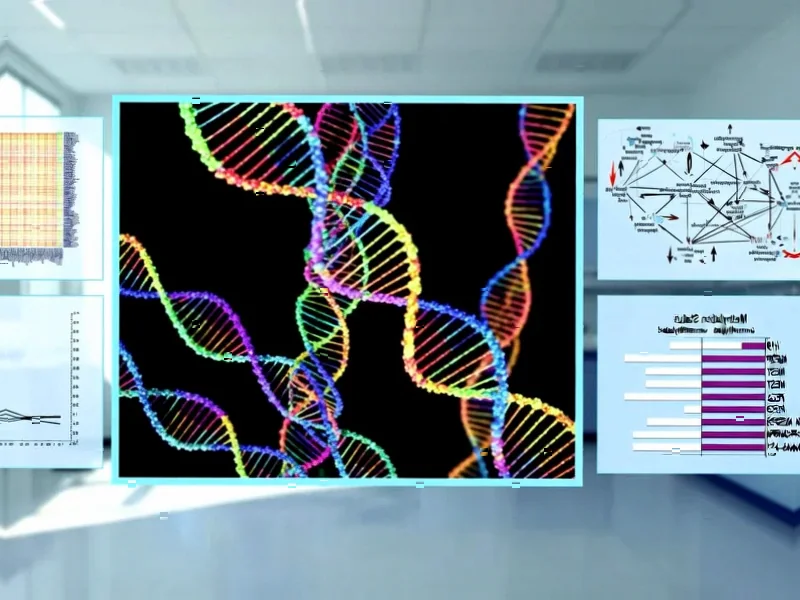According to Nature, new research using CRISPR/Cas9 to knockout the TBPL1 gene in breast cancer cell lines reveals dramatically different effects across cell types, reflecting the profound heterogeneity of breast cancer at the molecular level. The study found that TBPL1 and TBP were the only genes transcribed across examined cell lines, with TBPL1 showing only 40-45% amino acid conservation across species compared to TBP’s 80% conservation. In aggressive cell lines like SK-BR-3 and MDA-MB-231, both TBPL1 and TBP were overexpressed, mirroring patterns previously observed in colorectal cancer where increased TBPL1 expression correlates with invasion and proliferation. The research identified distinct gene expression profiles for each cell line, with T47D showing differential expression in pathways including amyotrophic lateral sclerosis and COVID-19, while MDA-MB-231 exhibited impacts on ribosome and axon guidance pathways. These findings highlight the complex role of TBPL1 in cancer biology and suggest it operates through mechanisms beyond traditional transcriptional regulation.
Table of Contents
The Hidden Complexity of Transcription Machinery
What makes this research particularly significant is how it challenges our understanding of basic cellular machinery. Most cancer research focuses on well-known oncogenes and tumor suppressors, but transcription factors like TBPL1 represent the operating system that runs the entire cellular program. The finding that TBPL1 controls different gene subsets in healthy versus cancer cells—and even varies between cancer subtypes—suggests we’ve been overlooking fundamental regulatory layers. This isn’t just another cancer gene; it’s part of the core transcriptional apparatus that becomes reprogrammed in malignancy. The fact that TBPL1 maintains only 40-45% conservation across species while TBP maintains over 80% suggests evolutionary flexibility that cancer cells might exploit for adaptation and survival.
Implications for Treatment Resistance and Personalization
The heterogeneity observed in this study provides a molecular explanation for why breast cancer treatments often show variable responses. When the same gene knockout produces different effects in different cell lines, it suggests that targeting TBPL1 would require companion diagnostics to identify which patients would benefit. The pattern of TBPL1 overexpression in aggressive subtypes like SK-BR-3 and triple-negative MDA-MB-231 suggests it could serve as both a prognostic marker and therapeutic target for the most difficult-to-treat cases. However, the research also reveals a concerning complexity: since TBPL1 regulates different genes in normal versus cancer cells, any therapeutic intervention would need exquisite specificity to avoid damaging healthy tissue.
The Road to Therapeutic Application
Translating these findings into clinical applications faces substantial hurdles. Targeting transcription factors has historically been challenging because they lack traditional drug-binding pockets and their effects ripple through multiple pathways. The research shows that TBPL1 knockout affects genes involved in everything from viral response (RSAD2) to cell adhesion (RAP1A), meaning therapeutic modulation could have unpredictable consequences. Additionally, the discovery of novel transcripts like ENSG00000285238 and ESNG00000281383 whose functions remain unknown highlights how much basic biology we still need to understand. Before TBPL1 can become a viable target, researchers will need to map its complete regulatory network and identify which specific interactions drive cancer progression versus normal cellular function.
Broader Implications for Cancer Research
This study suggests we may need to re-evaluate other members of the transcription machinery in cancer biology. If TBPL1, once considered a specialized factor, plays such diverse roles across cancer types, what about other TBP-family proteins or general transcription factors? The research also highlights the importance of studying multiple cancer models simultaneously, as findings in one cell line don’t necessarily translate to others. The connection to cell proliferation pathways and metastasis-related genes like vimentin suggests TBPL1 sits at a critical nexus between fundamental cellular processes and cancer-specific adaptations. Future research should explore whether similar heterogeneity exists in other cancer types and whether TBPL1’s role extends beyond breast cancer to other malignancies where transcription factor dysregulation drives disease progression.



